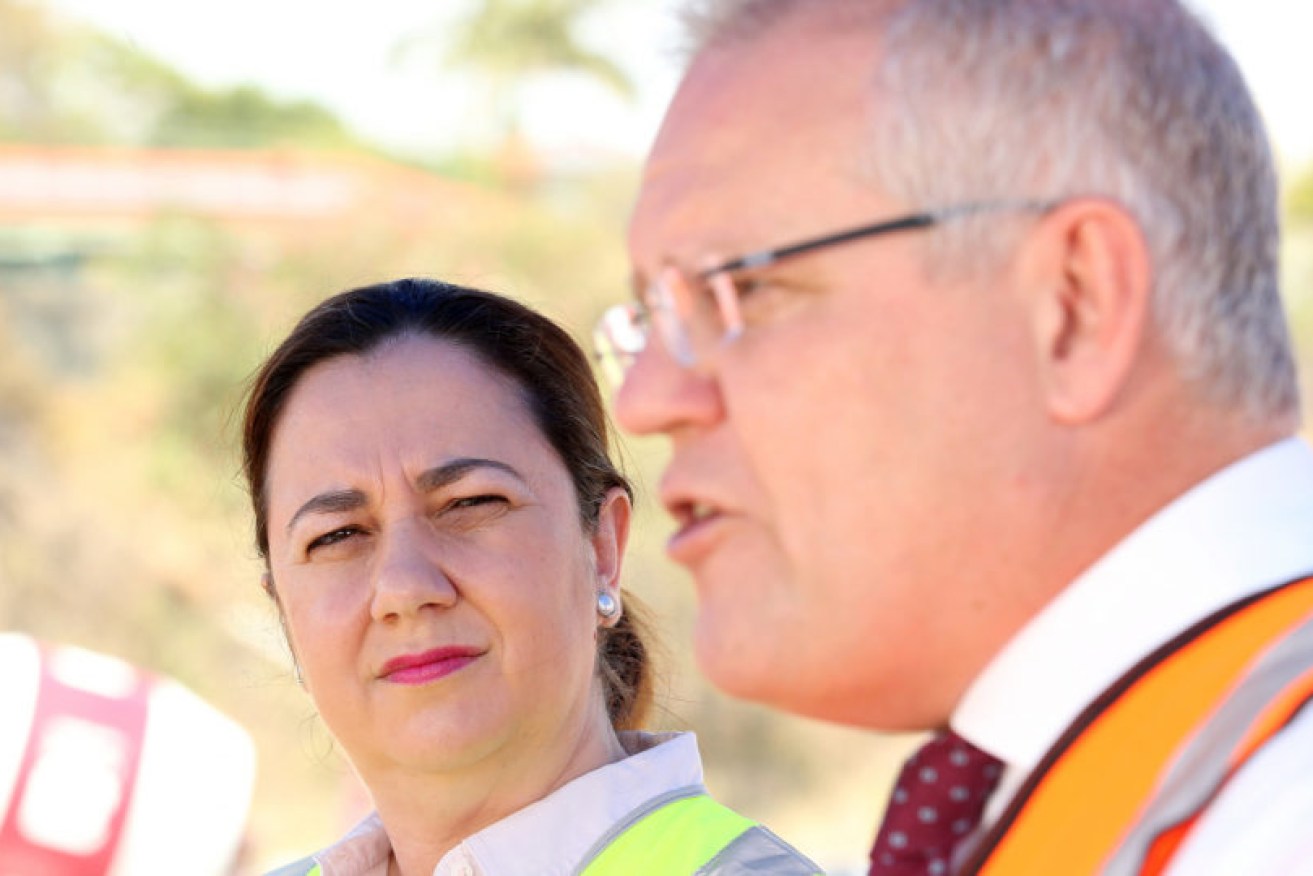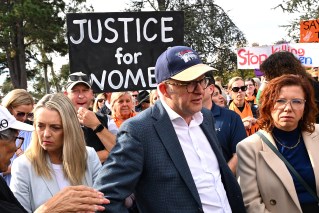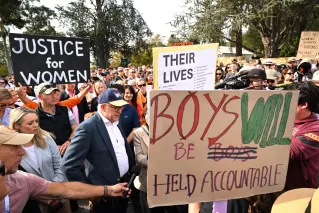Second-year syndrome has seen us earn some red cards, plus the odd perfect score
After an outstanding first ‘season’ in the Covid stakes, Australia, and some of its best-performed states, haven’t managed to keep things as well on track second time around, writes Dennis Atkins


Premier Annastacia Palaszczuk and Prime Minister Scott Morrison are seen by many voters as balancing the political scales. (Photo: The New Daily)
Following the arrival in Australia of the SARS-CoV-2 pandemic last February and March, the nation was stress tested in ways seldom imagined.
Our emergency responses were pushed to the limit, the federation faced challenges near to unprecedented, the whole health system was on prolonged, 24/7 red alert and the economy was hit by an expected shock akin to a tsunami.
To our credit we passed – and so we should have. There should be no shock that we handled this well, although others better prepared than Australia were unable to cope on many levels.
To give perspective and context, it’s good to recall where we were in February, 2020.
At that stage we were ranked the fourth most prepared to handle a pandemic in a field of 195 nations measured in the Global Health Security index which focuses on five key measures:
1. the prevention of the emergence or release of pathogens;
2. early detection and reporting for epidemics and an ability to respond rapidly;
3. having a sufficient and robust and health system for the sick and health workers;
4. strict compliance with international norms by improving national capacity;
5. and, dealing with a risk environment covering biological threats.
While the three nations with higher rankings – the United States, the United Kingdom and the Netherlands – faltered in a variety of ways, Australia stood out in keeping its people relatively safe and the economy able to withstand the threat of a deep recession and generational damage.
Now, a year later with a new, more virulent mutation of the original virus – called Delta and regarded as highly transmissible and shockingly quick in laying people low – we are looking at getting a pandemic red card rather than another best on ground in this second season.
Here’s a back of a napkin reckoning of how we have failed this time around.
The hotel quarantine system is no longer fit for purpose and works in spite of itself. Our vaccination rollout – dubbed strollout by London’s Financial Times – was lackadaisical, careless and complacent.
The unity and single purpose seen in the hastily assembled national cabinet has become a vehicle for a “how not to do” list.
The initial economic supports that protected workers and businesses through some imperfect but broadly effective measures have been replaced by ad hoc, “all sizes fit none” assistance packages likely to be too little, too late in the next round of business failures and job losses.
At the street level we seem to have learnt some of the lessons from the first year of the pandemic but failed to spot the weaknesses lived experienced revealed and are doing things worse the second time around
In one way or another, these various outcomes, good, not so good and bad, can and should be owned collectively with the majority of blame resting with Scott Morrison but plenty of responsibility resting on the desks of state leaders and our bureaucratic systems.
It’s no accident Morrison begins his increasingly prolix, repetitive, word dumps masquerading as news conferences with a statistic rich preamble. He always boasts an impossible to prove counterfactual that his government has saved more than 34,000 lives and kept about a million people off the dole queues.
It’s a rhetorical trick used to remind people of how much worse things could have been as well as being a cover for the failures and shortcomings of Morrison, his health minister Greg Hunt and that small army of the self-proclaimed best health advisers in the world.
At the same time many of our state governments repeat mistakes or fail to fine tune how they handle problems the second (or third) time around.
The Palaszczuk Government is a frequent candidate for the best and worst in show. A resolute approach to controlling the spread of the virus, genuine learning on the job when it comes to testing and contact tracing and foresight in spotting problems in real time put Queensland ahead of most other jurisdictions.
Along with South Australia, Queensland can claim to have successfully dealt with a threat from the Delta strain of the virus – and considering the size of this state, the extensive border with New South Wales and the potential entry points for viral spread, Palaszczuk and her advisers deserve special mention.
However, the state still hasn’t managed to soften the impact of its too often blunt approach to granting exemptions for family members and loved ones to visit sick or dying relatives.
It is a complete failure of imagination and systems management that so many truly deserving cases are still met with a cold hand of denial.
This is made so much harder to swallow and comprehend when entitled sports stars and celebrities get flown in on private jets and are bedded down in accommodation a few stars up from the run of the mill quarantine digs.
This apparent heartlessness has been a problem for more than a year. Is it too hard to find a work around for something that should be solved with some linear thinking?
The Queensland Government was ahead of the game on pushing for better quarantine facilities, identifying the weaknesses in using tourist hotels. But while it was the right thing to raise this at the start of the year, Palaszczuk and her colleagues should have driven the issue harder and gone earlier with the “go it alone approach” they’ve now adopted rather than waste most of six or eight months fighting with the Commonwealth.
Queensland is also in danger of being a vaccine laggard. There are three reasons behind this, starting with the success in keeping the experience of the virus to a minimum which prompts a “why bother” response in some minds.
Second, our chief health officer Jeanette Young scored an unwanted own-goal by talking down the AstraZeneca vaccine for young people, giving weight to the anti-vaccination forces. You don’t have to go very far anywhere in this state to find virulent anti-vaccine propaganda, usually linked to falsehoods spread by Clive Palmer and Pauline Hanson. It’s glued to posts on the streets and in the windows of some shops and cafes.
Third, apart from occasional enthusiasm lately for getting people vaccinated, there wasn’t an urgency to build numbers in this state. Some people watching where and to what extent vaccinations are happening in Queensland question whether this state will ever reach 80 percent of the adult population fully immunised. The same doubt exists for Western Australia.
Australia might have had a successful first year in dealing with this virus but year two is proving more difficult and we’ve failed to learn many of the all too obvious lessons.












